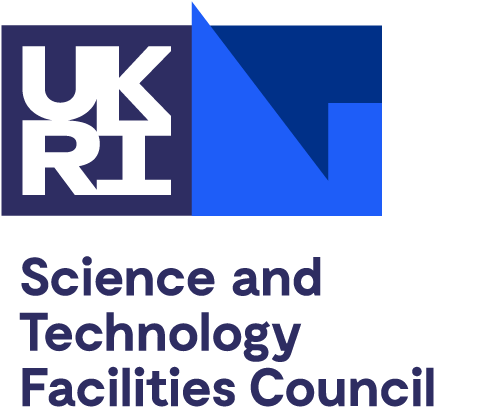National facilities
Boulby Underground Laboratory
You can carry out ultra-low background radiation and deep underground science projects at the Boulby Underground Laboratory at Boulby Mine on the edge of the North Yorkshire Moors. The laboratory is 1,100m below ground in a working mine low in background radioactivity.
Find out more about Boulby Underground Laboratory.
Central Laser Facility
You can use a range of specialised laser equipment to carry out experiments in physics, chemistry and biology at the Central Laser Facility based at Rutherford Appleton Laboratory in Oxfordshire. Laser facilities include advanced, compact, tunable lasers that can pinpoint individual particles and high-power installations that recreate the conditions inside stars. Available lasers are:
- Artemis – experiments use high harmonic generation to investigate ultrafast dynamics in experiments on gas, liquid and solid materials. They also exploit the spatial coherence of ultrafast XUV pulses for coherent diffractive imaging techniques
- Gemini – produces pulses of energy like sheets of light energy thinner than a human hair. It allows study of the way matter behaves under extreme conditions of temperature and pressure
- Ultra – produces a range of ultrafast light sources to probe the dynamics of molecular reactions in solids, liquids and gases and address scientific questions in the physical and life sciences
- Vulcan – delivers a focused beam that is 10,000 times more powerful than the National Grid for 1 picosecond (0.000000000001 seconds). It supports a wide-ranging programme in fundamental physics and advanced applications
- OCTOPUS (Optics Clustered to OutPut Unique Solutions) – imaging facility offering a wide range of techniques that allow development and exploitation of advanced imaging techniques for life sciences.
Find out more about the Central Laser Facility.
Chilbolton Observatory
You can apply to use the facilities at the Chilbolton Observatory in Hampshire for research into atmospheric science, radio propagation and space monitoring.
For atmospheric science there are a variety of instruments available including:
- radars
- lidars
- radiometers
- meteorological instruments.
Data from many of these are available via the Centre for Environmental Data Analysis.
The observatory hosts two antennas which are supported as part of the RAL Space ground station for use by science or industry partners for satellite mission planning and payload science operations.
The space monitoring facility uses the 25m antenna at Chilbolton Observatory for space surveillance and tracking and in-orbit testing.
The observatory also hosts the UK station of the European LOw Frequency ARray (LOFAR) radio telescope which is made up of thousands of antennas spread across Europe.
Chilbolton Observatory is situated on a large site which makes it easy to accommodate visiting instruments for research programmes and field campaigns.
Find out more about the Chilbolton Observatory.
Diamond Light Source
You can probe deep into the basic structure of matter and materials by applying for beamtime at the Diamond Light Source based at Harwell Campus, Oxfordshire. The national facility produces X-ray, infrared and ultraviolet beams that can help you answer fundamental questions about everything from the building blocks of life to the origin of the planet.
Find out more about Diamond Light Source.
Distributed Research utilising Advanced Computing (DiRAC)
You can apply for access to supercomputing for theoretical modelling and research in particle physics, nuclear physics, astronomy and cosmology at the DiRAC facility. It is used by scientists looking at questions such as how the Universe began and is evolving, and how stars and planets develop.
E-Merlin
You can apply to use e-Merlin, the UK’s national radio astronomy facility based at Jodrell Bank in Cheshire. e-Merlin is operated on behalf of STFC by the University of Manchester Jodrell Bank Centre for Astrophysics. It is an array of 7 radio telescopes across the UK connected to Jodrell Bank by a superfast optical fibre network. It is particularly important in understanding star formation, black holes and activity in nearby galaxies.
Hartree Centre
You can accelerate digital innovation within your business or organisation using supercomputing, data analytics and artificial intelligence (AI) technologies and expertise with the Hartree Centre at STFC’s Daresbury Laboratory in the Liverpool City Region.
Hartree Centre experts collaborate with industry and the research community to explore the latest computing and AI technologies, upskill teams, and apply practical digital solutions for enhanced productivity, smarter innovation and economic growth.
Whether you’re at the start of your digital journey or trying to tackle a specific obstacle on the way, we can help you identify and apply the right advanced digital technologies for your business.
Find out more about the Hartree Centre.
ISIS Neutron and Muon Source
You can gain unique insights into the properties of materials on the atomic scale by using neutron and muon instruments at the ISIS Neutron and Muon Source based at the STFC Rutherford Appleton Laboratory in Oxfordshire. The facility supports more than 2,000 national and international scientists carrying out research in areas such as clean energy, the environment, healthcare, materials engineering, polymers, and fundamental studies of materials. It has more than 30 neutron and muon instruments and more are planned.
Find out more about ISIS Neutron and Muon Source.
Browse ISIS instruments by technique.
Liverpool Telescope
You can get observing time on the Liverpool Telescope, a 2-metre unstaffed fully robotic observatory on La Palma in the Canary Islands. The telescope monitors variable objects on timescales of years to seconds and can observe unpredictable phenomena such as gamma ray bursts and supernovae. It can also carry out small-scale surveys and follow-up for other telescopes and space missions. The telescope is owned and run by Liverpool John Moores University.
Find out more about the Liverpool Telescope.
Microelectronics Support Centre
You can access a broad range of design tools and expertise in microelectronics through this facility based at Rutherford Appleton Laboratory in Oxfordshire. The centre aims to improve microelectronic and microsystem design, research and training in academic institutions across Europe.
Find out more about the Microelectronics Support Centre.
RAL Space
You can access expertise, technology and state-of-the-art facilities for space technology development and testing at RAL Space, as well as data and facilities for space and environmental science.
RAL Space is based at the Rutherford Appleton Laboratory in Oxfordshire and also operates the Chilbolton Observatory in Hampshire. RAL Space works with UK and overseas agencies, universities and businesses on space and ground-based space projects.
Find out more about RAL Space.
International facilities
CERN
You can carry out high-energy physics research with particle accelerators and colliders at the UK’s national laboratory for particle physics at CERN near Geneva. Researchers at CERN are using some of the world’s biggest and most complex scientific instruments to study the basic building blocks of matter.
UK membership of CERN gives our physicists and engineers access to the experiments and allows UK industry to bid for contracts, UK nationals to compete for jobs and research positions at CERN, and UK schools and teachers to visit. UK scientists hold many key roles at CERN. Firms in the UK win contracts worth millions of pounds each year.
The most well known of its instruments is the Large Hadron Collider, the largest and most powerful particle accelerator in the world with a 27km ring of superconducting magnets accelerating two beams of particles to almost the speed of light in opposite directions. The four main experiments of the Large Hadron Collider are:
- Large Hadron Collider beauty (LHCb) – built into a cavern 100m below ground. It is investigating the subtle differences between matter and antimatter
- A Large Ion Collider Experiment (ALICE) – uses a highly sensitive detector that takes measurements of hadrons, electrons, muons and photons produced in the collision of nuclei
- ATLAS – a general purpose detector to investigate a wide range of physics, including supersymmetry, extra dimensions and particles that could make up dark matter
- Compact Muon Solenoid (CMS) – like Atlas, a general purpose detector designed to investigate a wide range of physics, but using different technical solutions.
Find out about the benefits of the UK’s membership of CERN
European Incoherent SCATter (EISCAT)
You can measure the upper atmosphere from the mesosphere to the edge of space at EISCAT. The facility in northern Scandinavia is also used to study solar wind, near-Earth objects and space debris.
European Southern Observatory
You can observe at telescopes at the Paranal and La Silla observatories in Chile run by the intergovernmental astronomical research organisation the European Southern Observatory (ESO). The UK has been a member of ESO for 20 years, and telescopes available for use now and in the future are:
- Atacama Pathfinder Experiment (APEX) – a 12-metre telescope, located at 5100m and the largest, single dish, submillimetre-wave telescope operating in the southern hemisphere
- Extremely Large Telescope (ELT) – infrared telescope with a diameter of 40m designed to track down Earth-like planets and perform stellar archaeology. Expected to be available from 2027
- Visible and Infrared Survey Telescope for Astronomy (VISTA) – a 4m diameter wide-field survey telescope for conducting detailed imaging surveys of the sky
- Very Large Telescope (VLT) – four 8.2-metre optical and infrared telescopes with instruments allowing observations in a broad spectral region. They are capable of producing images of the faintest and most remote objects in the Universe
- VLT Survey Telescope – a 2.6m optical imaging telescope supporting the VLT through wide-field capabilities and ability to carry out standalone surveys
- Atacama Large Millimetre Array (ALMA) – combines 54 12m antenna and 12 7m antenna in an interferometric imaging array. It has sensitivity and spatial resolution at millimetre and submillimetre wavelengths to detect and study the earliest and most distant galaxies.
Find out more about the European Southern Observatory.
European Spallation Source (ESS)
You will be able to use neutron sources in a range of advanced instruments at ESS based in Lund, Sweden. The facility is expected to open in late 2027.
European Synchrotron Radiation Facility
You can apply for beamtime at the European Synchrotron Radiation Facility based in Grenoble, France. It operates the most powerful high energy synchrotron light source in Europe.
Find out more about the European Synchrotron Radiation Facility.
Find out more about the benefits from the UK’s membership of ESRF.
European XFEL
You can carry out research with extremely intense X-ray flashes at the European XFEL. The flashes allow mapping of atomic details of viruses, filming of chemical reactions and study of the processes in the interior of planets.
Find out more about European XFEL.
Find out more about the benefits from the UK’s membership of European XFEL.
Fermi National Accelerator Laboratory (Fermilab)
You can request beamtime at Fermilab in the US. The Fermilab Test Beam Facility is a particle physics division-operated, high-energy beam facility devoted to detector research and development.
Institut Laue-Langevin (ILL)
You can access the most intense neutron source in the world at ILL international research centre in Grenoble, France. A broad range of research is carried out at the institute, including in condensed matter physics, chemistry, biology, materials and earth sciences, engineering, and nuclear and particle physics.
International Low Frequency Array Telescope (LOFAR)
LOFAR provides unique access to low frequency radio astronomy to investigate galactic and stellar astronomy along with the study of high energy phenomena. The facility is led by the Netherlands and has sites across Europe.
Isaac Newton Group of Telescopes
You can observe on the Isaac Newton Group of Telescopes on La Palma in the Canary Islands. The telescopes are jointly funded by STFC and sister organisations in the Netherlands and Spain. The available telescopes are:
- William Herschel Telescope – a 4.2 metre optical infrared telescope which allows a wide range of astronomical observations
- Isaac Newton Telescope – can carry out both wide-field imaging and intermediate to low dispersion spectroscopy.
Find out more about the Isaac Newton Group of Telescopes.
Square Kilometre Array (SKA)
SKA will be the world’s largest radio telescope and will be fully operational in 2030. It will collect radio waves, which are invisible to the human eye. It is an international project, located in Australia and South Africa, with its global headquarters in the UK. Through STFC, the UK government is committing £277m to the construction of SKA and its headquarters, as a core member of the project.


